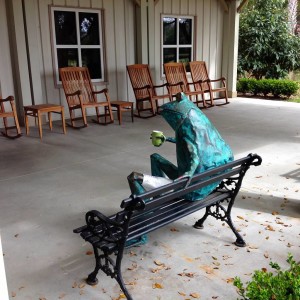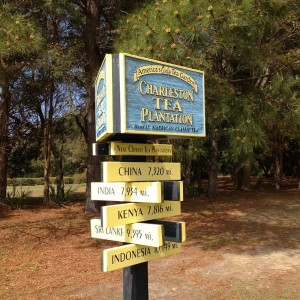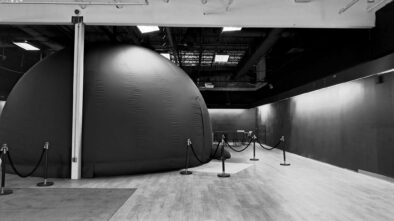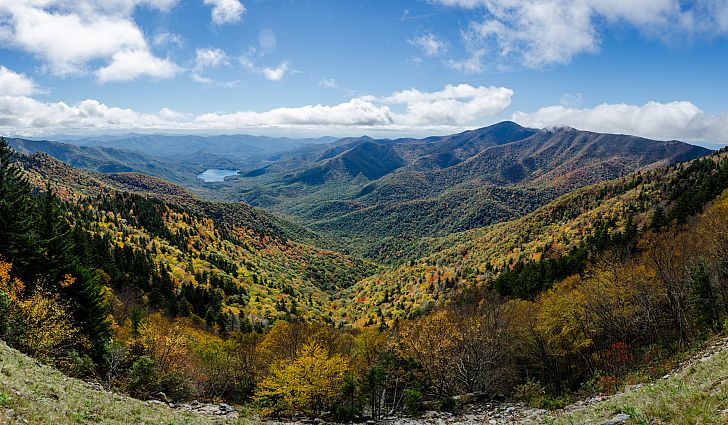More Fun For Visitors – The Road to Charleston Tea… – The Retired Mensch
The last time company showed up at the Mensch residence, we had a nice visit to Patriot’s Point. This time I had to find something to distract the in-laws, Jan & Jay, from the NCAA March Madness.
What could be more distracting than a visit to The Charleston Tea Plantation and more fun than lunch at a food truck at Irvin’s Vineyard and a quick stop at the Angel Oak.
The Charleston Tea Plantation is almost at the end of Wadmalaw Island, south and east of the Holy City. The only way out there is to drive the Maybank Highway which starts at Folly Road and crosses Main Road.
The drive is pretty simple: find your way to Savannah Highway, Route 17, and head south. Hang a left on Main Road, cross over the Intracoastal Waterway on one of the ugliest bridges in the world, and turn right onto Maybank Highway, Route 700, to the Plantation. You can get to Maybank Highway from Folly Road, too, but the four-lane of Savannah Highway is a little quicker.
Driving down the Maybank Highway is a little like driving back in time. You pass under old live oak trees with Spanish Moss dripping down like the conquistador’s beard from whence it got its name. Just pass the Angel Oak dirt road turnoff, Maybank curves to the left with Bears Bluff Road heading off to the right. (If your interests are more in the realm of wine and booze, head right on Bears Bluff Road to Irvin Vineyards.) Along the ten mile route you’ll pass plantations, churches, a school, a tree farm; You could probably tune your radio to an AM station and hear Patsy Cline.
I found the gated entry on the left and followed the dirt road pass the experimental tea field and found a parking space under the trees. It was a short walk to the visitor’s center and gift shop where everything is tea, tea and more tea. There was on over-sized frog, named Waddy, sitting on a bench on the porch waiting for us to stop by for a photo opportunity.
My visitors were wowed with the free factory tour of how the tea is processed after harvest and prepared for delivery to the Bigelow Tea Company for packaging in a unique pyramid=shaped teabag. Bigelow? I thought this was the Charleston Tea Plantation?
Bigelow Tea Company is a recent part of the history of CTP that goes back to 19th century China, Summerville, SC of all places, and the Lipton Tea Company as we learned on the not-free-but-reasonable Trolley tour of the Plantation. (AAA discount available.)
Our guide and driver was John Kennedy along with voice over from Bill Hall, the Founder of Charleston Tea Plantation.
It turns out that tea plants love South Carolina: the heat and the humidity are tea plants’ best friends and the sandy soil of Wadmalaw Island is perfect for their cultivation. And who knew they are camellias? Yes, the scientific name is Camellia sinensis. The plants from China that were planted in Summerville in the 19th century are now producing tea in Wadmalaw Island thanks to the Lipton company. Apparently tea plants give live oaks a run for their money in the longevity department.
When Hall needed to expand the ONLY tea plantation in North America, he turned to Bigelow Tea Company as an investment partner. It allowed him to expand production and include a new visitors center and gift shop. Hall is actively involved in the business, checking on plants in the green house, supervising harvesting and planting.
Just outside the visitor’s center there is a geography pole, you know, a pole with arrows pointing in different directions with country names and distances painted on the arrows? This pole points to the next closest tea plantations.
There is a map of the world in the visitor’s center with tea plantation sites illuminated. The only light in North America is Wadmalaw Island.
We left America’s Tea Garden with a several boxes of American Classic Tea and some souvenirs for tea drinking friends and headed back to the Angel Oak. The turn popped up before I knew it and I almost missed it. Why does the return drive always feel shorter than the drive out? Anyhow, the Angel Oak duly impressed our visitors with its girth, length and age. They actually seemed awed as do most visitors to the Angel Oak. All the free tea was beginning to work its magic and we headed for home to tune in the NCAA.





That is a pecan tree at the Charleston Tea Plantation, NOT The Angel Oak.